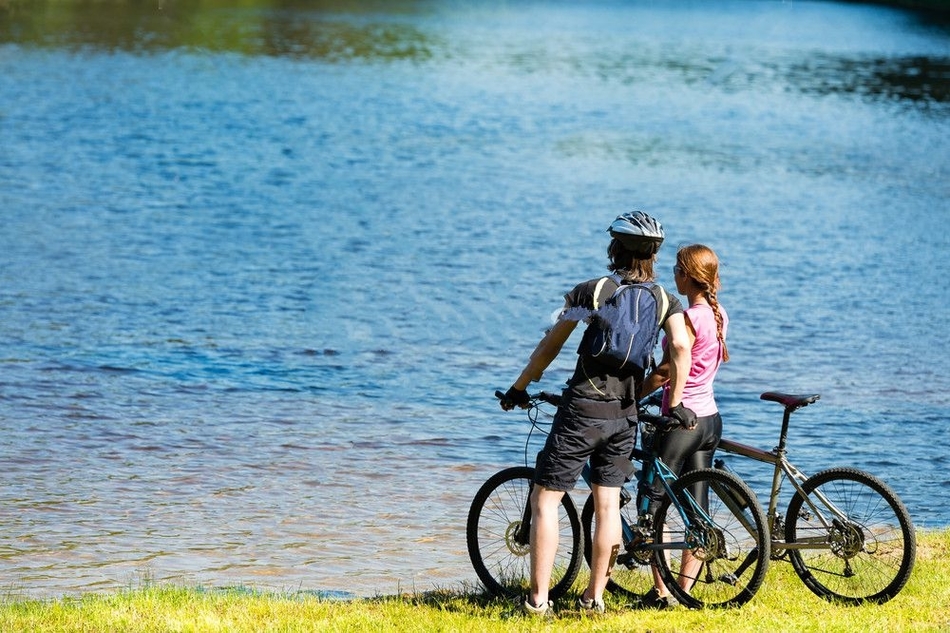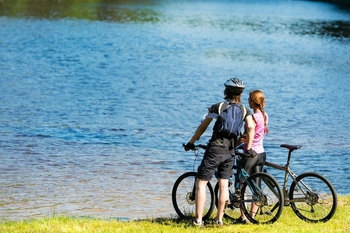
Mudguards, some people love them and some people hate them on their mountain bike. Manufacturers don’t make their bikes with mudguards. Is there a good reason for this.
Why do mountain bikes Not have mudguards? Mountain bikes don’t come with mudguards because they don’t look good, break easily, and rub against the tires. Mudguards don’t work well, they add weight, and they are noisy. Finally, they are a hassle to take on and off, increase risk during a crash, and are not part of mountain bike culture.
Let’s take a closer look at these anti mudguard reasons.
Why Don’t Manufacturers Make Mudguards Permanent on Mountain Bikes
- Many mountain bikers don’t like how mudguards look on their bike. How their bike looks on the trails is important to them. If they think their bike looks cool this will give them more confidence. It will make them want to ride their bike more. This will improve their skills.
- Mountain biking is a much rougher ride than road biking. Riders go on different types of terrain which are risky. Drop offs and going off jumps can cause severe impact to the bike. Depending on the mudguard some of them can break easily. This can be dangerous and frustrating.
- Tires are very important in mountain biking. Wheels need to rotate freely over different types of terrain and handle various sorts of small obstacles as well as climb steep hills. At times mudguards rub against the rear tire because they spin around and get attached to the saddle.
- Some mudguards just don’t work well. They move out of alignment with the tires of your bike and you still get wet and dirty. Other times you drop your seat post quickly and the mudguard get knocked off your bike. Then you have to go back and get it.
- Some mountain bikers are real weight weenies. Cross country riders want to go as fast as they can. So they want to take advantage any way they can of reducing the weight of their bike. They do not want to add weight by adding mudguards. Same with riders that do jumps and tricks, they want to jump far and high.
- Riding through the forest and on open terrain can be a peaceful experience. They do not want to hear the rattling of front and back mudguards. This becomes even more annoying if you are going over roots and rocks. Sharp cornering and switchbacks can also shake mudguards and make noise.
- If riders do use mudguards, they will not need to use them all the time on the trails. Mudguards are mostly needed when conditions are wet. The other times riders can remove them from their bike. This can get to be a hassle, taking them off, putting them back on, taking them off again.
- Mountain bikers ride over drop offs, jumps, roots, rocks, and go around sharp turns. Anyone of these types of terrain could lead to a crash. Mudguards during a crash could break or move into a dangerous position which the rider may fall on to. Increasing your risk of injury.
- Mountain biking is a tough activity. Sometimes you get hurt with bumps and bruises and sometimes you get very dirty. Many riders take pride in coming home with dirt in their face and all along their back. Using mudguards would take away the toughness and pride that they feel.
Reasons Why Some Mountain Bikers Don’t Use Mudguards
Some mountain bikers think that whether or not you use mudguards does not matter because you are going to get dirty and wet any way. Especially if you go out riding when it is raining or snowing you are going to get wet. Mudguards won’t make much difference.
Its easier to just wear goggles or a full face helmet. In the above situation you are biking in bad weather conditions. If you can’t see, goggles or a full face helmet will do a better job. You’ll see better and water and dirt won’t get in your eyes.
Some riders like to keep things simple. The less gear and equipment that they need the better. It is one or more things less to worry about. They don’t have to be concerned with paying for it, having it break, or maintaining. They don’t want to think about mudguards.
The trail is going to soak up the water. Some riders don’t ride in the rain and prefer instead to just wait until the rain stops. Then they can just wait half a day or a day for the trail to soak up all the water.
Other riders ride on singletrack through the forest. These forests can be dense and thick. The trees above are close together and act like an umbrella for the rider as well as for the trails. This keeps the trails relatively dry.
Many mountain bikers will never use mudguards because they like to get dirty. To them mountain biking is about getting out in nature. Roughing it, so to speak instead of riding on comfortable pavement. Rather than worry about getting wet, they will wear waterproof clothing.
Do You Need To Have Mountain Bike Mudguards
- The first consideration to think about is how often will you go mountain biking on wet muddy trails. The main reason for putting mudguards on your bike is so mud and water don’t spray on your face and body.
- Mud and water get kicked up by the front tire and spray on to your face and chest or stomach. The back tire can kick up mud and water on to your back. So you need to determine how often are you going to ride on trails like this.
- If you are going to ride on these types of trails 10% of the time then it may not be worth it. If you will ride on wet muddy trails 50% or more of the time then it will probably be worth using mudguards.
- The next thing to consider is what type of rider are you. When you are riding on wet muddy trails and the mud and water sprays up at you, does that bother you. Or do you like and don’t mind getting muddy and dirty when you go mountain biking.
- Some riders don’t really like getting dirty and wet every time they go out mountain biking. Especially if after they come back from riding they want to go to a bar or restaurant to eat. They don’t want to be all dirty. Also, they don’t like to come home after and need to wash their clothes after every ride.
What Types of Mountain Bike Mudguards Are There
There are mudguards for the front tire, the rear tire, and there are mudguards which are compatible for both the front and rear tires. Some mudguards are thin and others are wider. Make sure to get a mudguard that is wider than your tire or you will still get sprayed.
- You may want to get a mudguard which is wider. This is so, not only won’t you get sprayed but you can prevent your mountain bikes frame from getting sprayed. This will keep it cleaner so you won’t need to clean it as often. This will also help your bike to last longer.
There are mudguards which are longer and those that are shorter. The longer ones will do a better job of protecting you and your bike from mud and water spray. You can choose to get mudguards as a set meaning the front and the back together. Or separately just the front or just the rear.
- Mudguards come in different sizes in order to match the size of the mountain bike. Such as 26 inch, 27.5, 29 inch, and for fat bikes. Mudguards are made from strong plastic materials such as polypropylene and poly-carbonate.
Mudguards even though durable are still pretty lightweight. Some mudguards when installed are only half an inch away from the tire. Others can be installed so they are positioned a few inches above the tire.
- When installing mudguards some are very easy to install because you can just clip them on. You do not need any tools which makes it easy to take on and off. Other mudguards you need to bolt them on. You will need to have drilled holes before you can put them on. Overall mudguards are your own personal preference.

